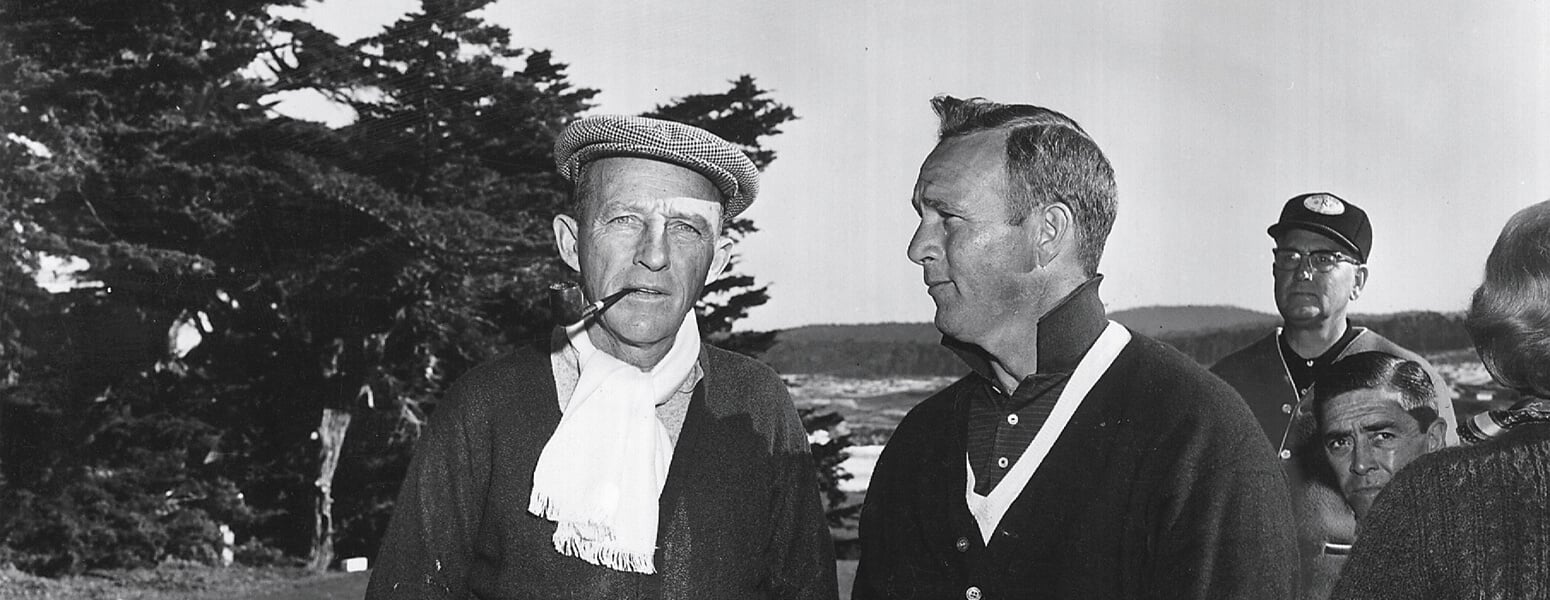Palmer on the Rocks

Golfers often face an unannounced competitor when playing amidst the spectacular natural beauty of Pebble Beach—Nature itself. Arnold Palmer discovered that firsthand in 1963 and 1964 when shots into the rocks on the same hole, the 17th, wiped him out of contention. In 1967, it was a tree that got in the way.
Palmer at the 1963 Crosby
In the third round in 1963, Palmer hits a shot on 17 that sails over the green and apparently disappears into the ocean. He invokes the lost-ball rule and tees up a new ball. When his original ball is found on the rocks, he plays it onto the green. The PGA later determines that he had, in effect, abandoned his first ball by hitting the second, and disqualifies Palmer, ending his streak of 47 consecutive tournaments in the money.
Palmer at the 1964 Crosby
A year later, again in the third round and again on 17, Palmer hits a shot over the green into shallow, rocky water. At the time, local rules defined this as part of the course. In one of golf’s most famous and curious images, Palmer remains and swings away at the ball for 20 minutes as a stray dog stands by and watches.
“His nearest [legal] drop,” noted commentator at the time, Jimmy Demaret, “would be Honolulu.” Eventually Palmer takes a nine on the hole.
Palmer Up a Tree
Nature again plays saboteur to Palmer at the 1967 Crosby. Palmer comes to the 14th hole one stroke behind Jack Nicklaus in the final round. As he tries for the green on his second shot, he hits not one but two balls off the same tree. Both balls carom out of bounds, and Palmer takes a 9 on the hole. He finishes the day third behind Nicklaus and Billy Casper.
In an apparent, and belated, attempt to make it up to him, Nature produces a storm that night that uproots “Palmer’s tree,” blowing it to the ground.